In another article, we wrote about the top animals to raise for survival. Now we’d like to talk about animals that you should raise or purchase in case you need to bug out quickly and need to go somewhere that a car or truck won’t go.
We understand that there is quite a bit of controversy over choosing animals instead of motorized vehicles but there are pros and cons to each.
Motorized vehicles require fuel in the form of gas, diesel or biofuel in order to keep running, but they’re much faster than animals. Animals are more agile and the only fuel that they require, at least in most cases, is a supply of grass and water. Of course, if you don’t live near places that are abundant in grass and water, then this is an issue.
However, if you do, then animals are a viable, dependable means of transportation. They do get tired and require rest, but so do you, so that cancels out that con. Since we’re all about diversity and having animals and objects that are multi-purpose, we’ve focused on animals that can be used for more than just transportation, when possible.
Horses
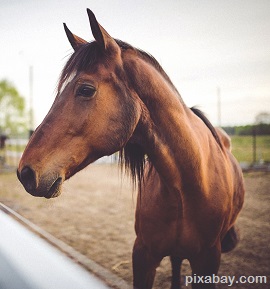
In addition to being great for getting you somewhere in a hurry, they can also be used as pack animals and to pull a cart loaded with supplies. If you need a field plowed, horses can do that job as well. Unless you’re planning on breeding your own horses, a gelding (castrated male) is the best horse for escape.
Stallions (non-castrated males) tend to be more difficult to train and they have two things on their minds – breeding and eating, in exactly that order. They’re very territorial and wouldn’t make good mounts for kids or people who have little experience with horses. Mares (female horses) can be a bit moody. Geldings generally have a more even temperament and are easier to train.
Horses require only grass and water and can go all day before they need fed. Dried horse manure can be used as fuel to start and maintain a fire, though if you’re on the run, you’re not likely to stand in one place long enough for it to dry and be useful for this.
{adinserter bph}There’s an old saying that if a horse has 4 black hooves, buy it. If it has three black hooves, buy it, but if it has only one black hoof then pass it by. This is because horses with dark hooves (as opposed to white or light colored hooves) have sturdier feet that are less prone to cracking. This is critical because, as another old horse tale states, “no feet, no horse”. Once your horse goes lame, he’s useless to you, except as a food source.
It’s for this reason that many horses need shod in order to take rough terrain without cracking a hoof or getting a stone bruise on the bottom of their foot. If you want to have the sturdiest horse possible, look into adopting a mustang. You can often get foals from them that are easier to train than if you get an older mustang and to adopt one, you can expect to pay around $500-$700, whereas a domestic horse will cost you anywhere between $1000-$2000.
Mules
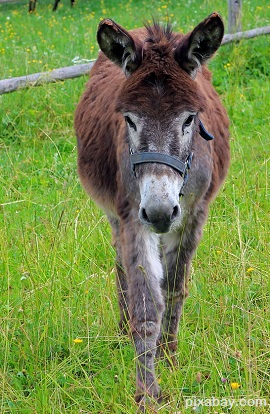
They are also known for their pulling power so you can use them for pulling a wagon, cart or plow. As with horses, they can be quite expensive but also have tremendous staying power and work well as pack animals, too.
Mules are territorial and will defend your property or a person against invading animals more readily than a horse will. They’re also much less prone to spooking.
There is a reason that there is a saying, “stubborn as a mule” though. Mules are intelligent and strong-willed. Once trained though, they are amazing animals to use for quick escape or to carry your packs. They have at least as much endurance as a horse and can carry a bit more than the average riding horse so if you’re thinking about an equine, compare the differences between mules and horses and decide for yourself.
One thing to remember about mules though is that they are sterile – you can’t breed one mule to another. Both hinnies (female mules) and mules (male mules) have difficulty making sperm or eggs and even when they do, their chromosomes don’t match up well because they’re a hybrid animal created by breeding a female horse (mare) to a male donkey (jack).
Donkeys
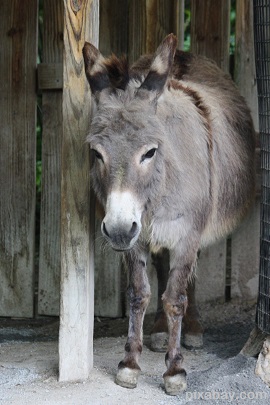
They’re small but can be used as riding animals as long as you’re not in a hurry.
They have amazing endurance and are great protective animals to watch over your herds.
They won’t back down from a fight with a coyote or wolf and will voraciously use their hooves and teeth to kill animals that want to have one of your sheep for dinner. They also bray to let you know that there’s an intruder.
Donkeys can also be used to pull small carts. With the exception of speed, donkeys have very few downsides; their smaller size requires less food and they can go practically forever. They’re also used as companion animals for horses, mules and just about any other critter.
Llamas
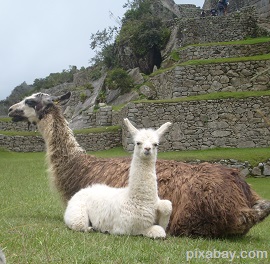
They’re also protective of other animals as well as “their” people and are almost as good as a dog when it comes to property defense, without the legal issues. They offer large amounts of wool that can be spun into yarn, used for stuffing or traded.
Llamas are also surprisingly easy to keep and don’t eat as much as a horse or mule. The downside to a llama is that, even though they make good pack animals, they’re not suited to riding because they can’t carry much more than a small child. Adults weigh too much.
Dogs

They can, of course, protect your person and your property but may be prone to eating your chickens.
The downsides to using dogs for transportation is that they’re only good in snow and they’re carnivores, which means that they’ll be cutting into your meat supply.
We hope that this article, combined with our other one, has given you some insight into what animals you may want to consider raising for survival or for your homestead.
Do you have a different experience on raising transportation animals, or have other suggestions on this topic? If so, please feel free to share them with us in the comments section below!
This article has been written by Theresa Crouse for Survivopedia.


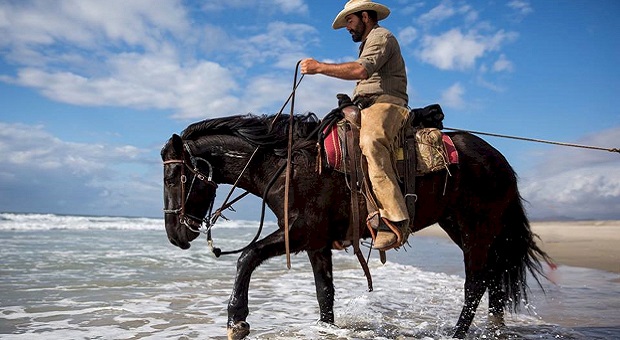

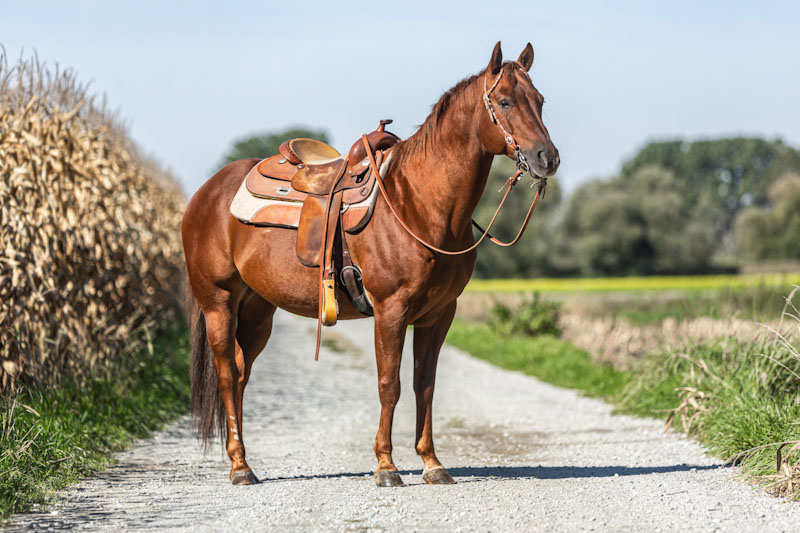
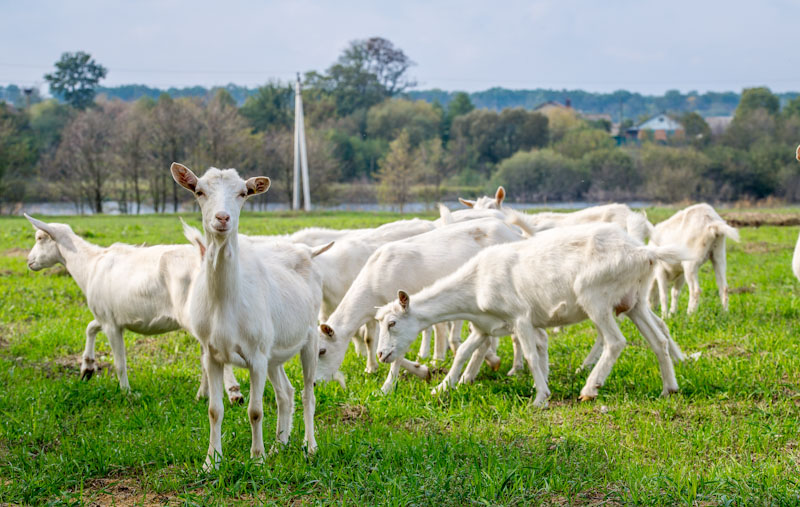
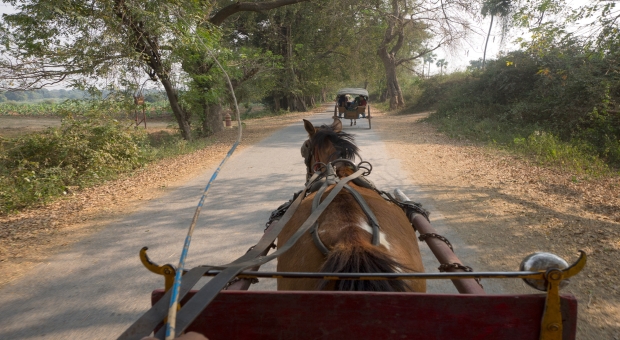
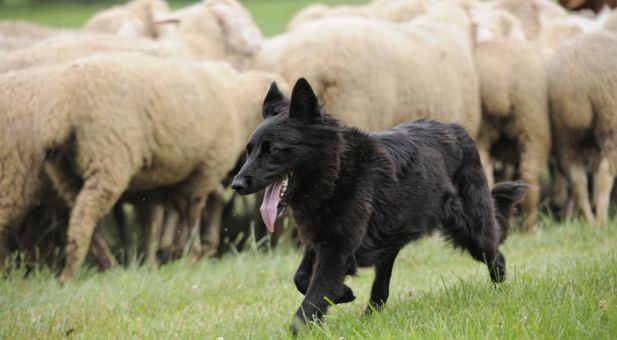

Gary | July 17, 2015
|
You left out a most important animal – the goat. It can be used for transporting via cart as well as for meat and will survive very well on almost any kind of vegetation, brush or trees along with water. They are very trainable and follow their leader (you) as their dominant head of the herd.
Marty | July 17, 2015
|
Yes, but don’t spoil them. I’ve had numerous goats who not only wouldn’t eat the weeds, but would only eat quality alfalfa. For us they were just pets, so it was no big deal.
Jana | July 17, 2015
|
Couldn’t dogs be used to pull wheeled carts in flat terrain? (Not that I’m thinking about it, but somebody might be.)
Mahatma Muhjesbude | July 17, 2015
|
Every once in a while in my town i see this leftover 70’s hippie with two average sized German Sheps pulling him around for errands. Then i see him going down the road out of town when he’s finished. He carries his stuff in a back pack while standing on a SKATE Board with what appears to be slightly over sized wheels. He’s just holding a leash in one hand connected to both dogs who are wearing the harness type connections, instead of directly to the collar.
The dogs don’t seem to be laboring at all and since German Sheps have one of those ‘trotting’ gaits for distance/duration travel they’re not crawling along but going smoothly at about a medium jogging pace a lot quicker than walking.
I guess that ‘whatever works’ …sometimes works quite well?
eddie | July 17, 2015
|
Good call.
German Shorthaired Pointers are also excellent. They’re big, strong and very smart. They can do guard duty, they’re non-stop hunters of fur and feather and they can easily pull a sled or a wagon.
\
Blackwolf1 | July 18, 2015
|
Not a very good protector though. Some may be the exception but most don’t protect well. A Belgian Malinois is better. Faster than a German Shorthair, more than capable in the hunting department, can tolerate a variety of weather conditions and is a fierce protector. Best of all it is extremely intelligent.
Dee | July 19, 2015
|
Yes
I have old pics of rottwiellers hitched to milk carts. Dogs can work,carry packs and protect us. They can be trained for numerous things. They are not just for sledding. Their wonderful attributes and contribution to our civilization seems a bit glossed over.
Sherri Kish | July 23, 2016
|
Before the native Americans had horses they used dogs to transport their heavier loads and i don’t mean by dog sled. They used travois. The basic dog travois consists of two aspen or cottonwood poles notched and lashed together at one end with buffalo sinew; the other ends rest splayed apart. Cross-bars are lashed between the poles near the splayed ends, and the finished frame looks like a large letter A with extra cross-bars. The dog travois of preeuropean times was small, capable of pulling 50 to 75 pounds making them effecient carriers of heavy loads.
Leonard | October 6, 2017
|
Hi Sherri Kish,
I enjoyed reading your detailed information about the Travois. You have motivated me to try to make one myself and of course, it goes without saying I will require additional research before attempting this project.
Years ago, our earlier brothers and sisters endured many obstacles in miserable and barely habitable conditions and therefore to all our past and current Four-Legged Friends a many thanks to you and as a result, I now have an even better appreciation for the Travois.
Leonard Martin
dAN | July 17, 2015
|
Thanks for the articles, we get a lot of good ideas & info. from them!
I would disagree with you on the statement about horses being “easy to train”.
Some are, some are not. For the average person with a limited knowledge (or none) of horses, they would be WAY better off to spend the money on an animal that has already been trained & has experience doing what it is they want. Yes, you will pay substantially more for the horse, but it will be much less that a hospital bill for the owner or a vet bill for the horse. Plus they will miss out on a lot of heart ache when they find out the hard way that the horse they have isn’t going to work out for them. Buy trained or hire a good trainer. You can’t learn horse training from a book.
Watbe | July 17, 2015
|
Standard size goats are great for milk, easy keepers as they will eat just about anthing. The can also be trained to pull a cart of “Bug-out-Gear”.
Stay away from the Pygmy and mini breeds unless you are a loaner or two person group. A family can survive off a small heard of goats in the south and sheep are the better choice for longer cold climates and higher elevations where the wool can be harvested for clothing or trade. Maybe a few (3 or4) of one each of the (bucks) male and a couple (does) females. Does need to be approximately 15 months old to breed. 150 day gestation (4) months often brings twins but sometimes more or less. Keep in mind a Buck has a strong odor when he is in Rutt so be prepared for the smell. If a buck has been descented, females may not concent to breeding with him.
Marty | July 17, 2015
|
Theresa, great article. Things must be different in Florida. Here in the west, horses are a glut on the market and can often be picked up for cheap or even free. One of my neighbors gave me a little Buckskin stud colt with excellent breeding. If you don’t care about papers, run of the mill horses here are a ‘dime a dozen’. We have state prisoners who train Mustangs from BLM. They have sale several times a year and the Mustangs go for $125.00 for a halter broke animal, and $25.00 more for an additional Mustang. If one can be picked up young enough, they are usually as easy to train as their domestic cousins.
We live in Grass and Alfalfa farm country in the mountains. I’ve made arrangements with the two farmers I buy from. In case of an economic crash and the dollar becomes worthless, they will accept silver in payment. We have four horses and go thru about 400 small bales per year. We always buy the hay for the entire year to last until the next cutting season. Again, thanks for the article.
John Wheeler | July 17, 2015
|
Another important animal you left out is the ox. They won’t win any races, but they are probably one of the most powerful animals out there, except maybe the largest breeds of horses. They can pull a load on an ox cart that lesser animals would not be able to handle, and they can be used for plowing — their slow, steady pace may be even more suitable than horses for that. Training oxen is definitely not an easy skill, however.
Chip | July 17, 2015
|
Dogs can of course be used without snow – you just need a vehicle appropriate to conditions. Wagons, carts and travois can all be managed by one or more dog.
Cindy | July 17, 2015
|
I was wondering why the mini horse was not added to this list. I have seen two hooked to a light buggy and pulling an adult. They are small and eat less but have the same temperment as their full size cousins.
Milie Johnson | July 17, 2015
|
You are wrong about a hinnie being a female mule. A hinny is the offspring of a female donkey and a male horse. A female mule is called a mare mule.
eLIse Sweg | July 19, 2015
|
You are right about a Hnnie! A female mule is called a Mollie and a boy mule called a John.
Bonnie Willey | July 17, 2015
|
First you said the llama ‘can carry large amounts of weight with no issues.’
Then you said “they’re not suited to riding because they can’t carry much more than a small child. Adults weigh too much.’
Can they ‘carry large amounts of weight with no issues.’, or not?
eddie | July 17, 2015
|
Horses and Mules must be trimmed at the hoof regularly. Put that on the “to do” list if you think you’re just gonna toss hay and keep water. And don’t think you’re just gonna go out to the corral and start nipping and trimming- screw up and you have a lame horse. If you need to use them in rough country or if you’ll use them for draft they MUST be shod.
Unlike a jeep, they keep consuming even if they are in the garage… ( I know, I keep the best traveling horses on earth- Missouri Foxtrotting Horses.)
eLIse Sweg | July 18, 2015
|
I do have Mules and they are NO. 1 For me they may not be fast as a horse but can do far more!
eLIse Sweg | July 18, 2015
|
I do not shod my Mules but I do trimmed their hoofs.
You can Shod, I do take them up in the back country.
We do live in Montana.
Marty | July 18, 2015
|
Yup, that’s true. I have a farrier who comes every 8 weeks. He, along with my hay farmers has agreed to continue his services in exchange for silver. My back will not allow me to complete this chore. The farriers out there will need to work during a grid down situation. You just have to have something to barter with. For me it’s gunsmithing and silver. Others need to figure out whats best for them. You’re right, a vehicle break down can just be set aside. However, there goes your transportation while it’s broke. I have made other arrangements such as my 1970 F-250. I expect it to be my emergency transportation and hay transporter. Think of a trade that will be necessary during grid down and work at it. It may get you through. Hell, even your local Vet and mechanic will need to barter.
Jim von Oberst | July 18, 2015
|
Mules and burros-in deep mountain terrain, both these animals are far less skittish and foot-sure than the horse. They also can browse local forage, and
require minimum grain when under heavy work. I live in the northwest mountains and consider what to to if gasoline becomes too expensive or hard
to get. Excellent article!
Jim von Oberst | July 18, 2015
|
My mistake-Both burro and mule are more foot-sure in rough terrain than a
horse! Sorry!
Pingback:How To Carry An Injured Person By Yourself | Survival skills, survival guns, survival guide | July 20, 2015
|
Pingback:5 Animals To Raise For Survival Transportation | TheSurvivalPlaceBlog | July 21, 2015
|
M L Limbert | July 26, 2015
|
A Hinnie is NOT a female mule. It is a mule with a donkey mother and a horse father, harder to breed than a horse mare to a donkey sire.
Pingback:Mule And Horse Breeds For Survival | Survival skills, survival guns, survival guide | August 13, 2015
|
Ian | August 18, 2015
|
Alpacas (I know they are similar to Llamas) are another good pack/trekking animal. I remember reading about a guy whose friend had started a trekking company and had invited him up.
Whilst walking through a river the alpaca got its foot jammed between rocks. He was immediately ready to have to keep it calm based on previous experiences with horses and other equine breeds.
Instead he got an animal that stayed calm and allowed them to unload it, whilst they were doing so he noticed that it was actually looking down at its trapped foot and moving it very carefully and gently. He swore you could almost hear the gears moving as it tried to figure things out
Once the load was lightened it moved around very slightly and lifted its foot free and walked on a bit, stopped, waited to allow them to examine the leg, then be reloaded, them walked on.
Pingback:13 Survival Lessons From Santa, The Ultimate Prepper | Prepper's Survival Homestead | December 22, 2015
|
Pingback:Rural Bugging In: 10 Problems And How To Solve Them | Prepper's Survival Homestead | February 3, 2016
|
Pingback:13 Survival Lessons From Santa, The Ultimate Prepper | Survivopedia | June 21, 2016
|